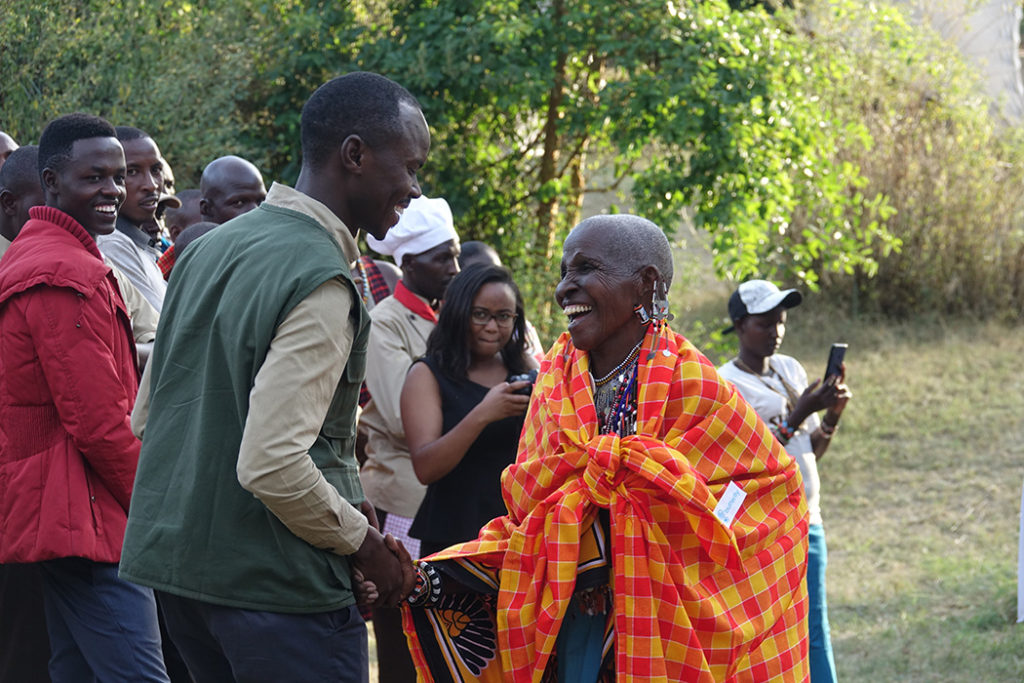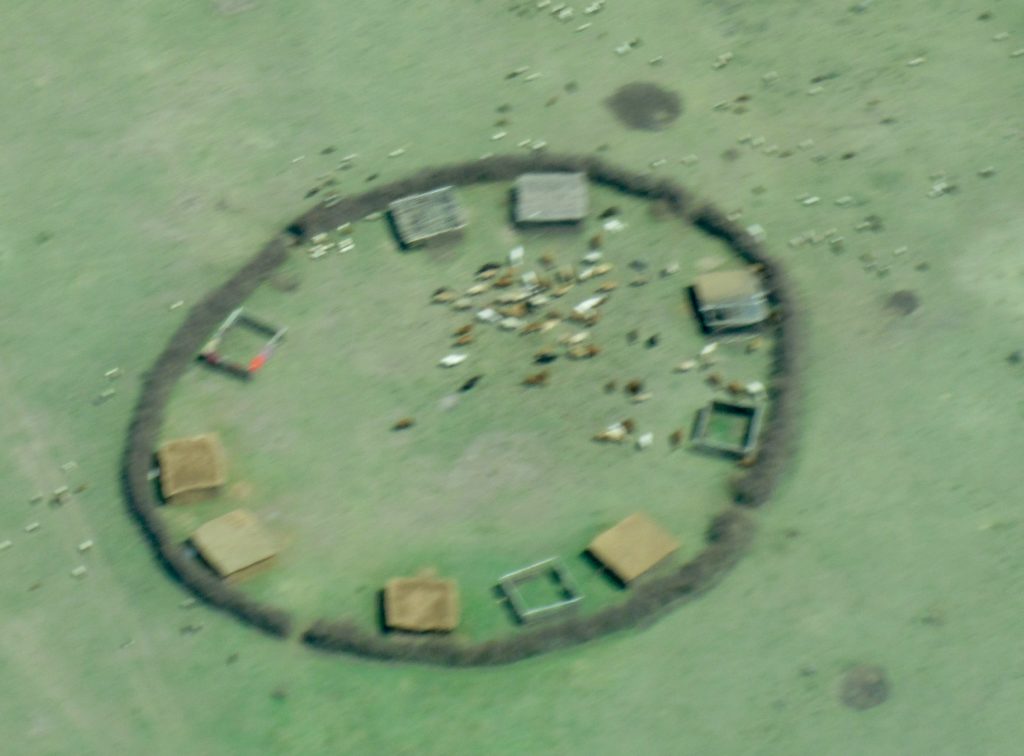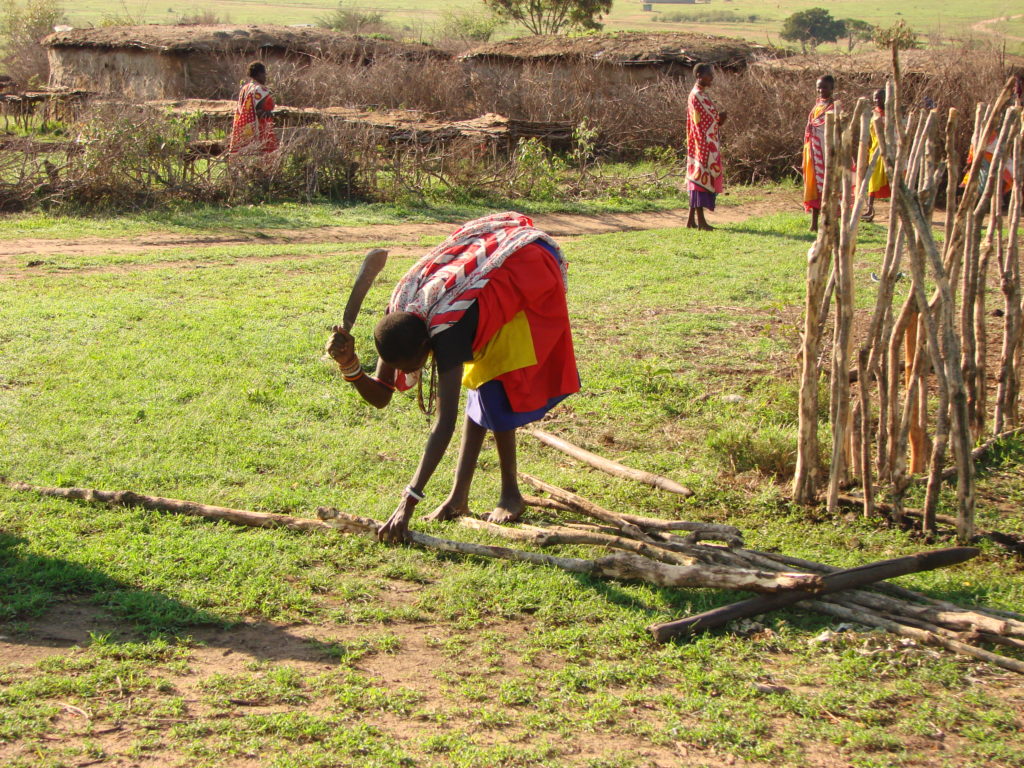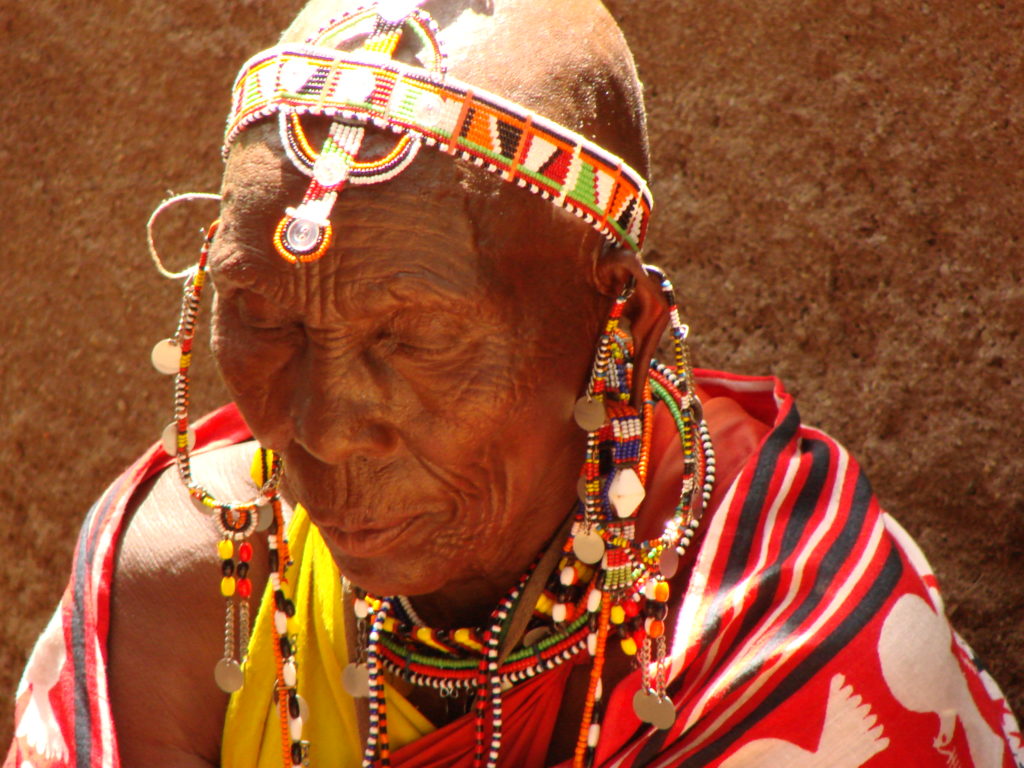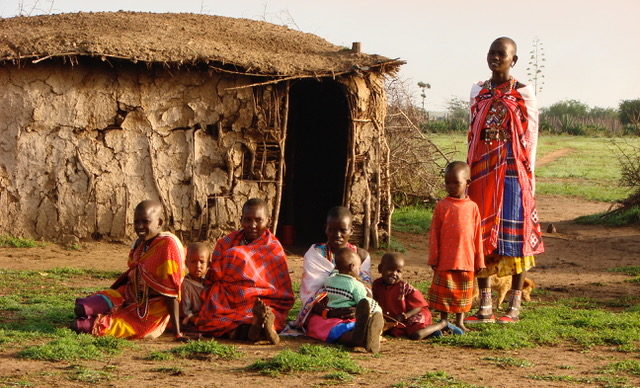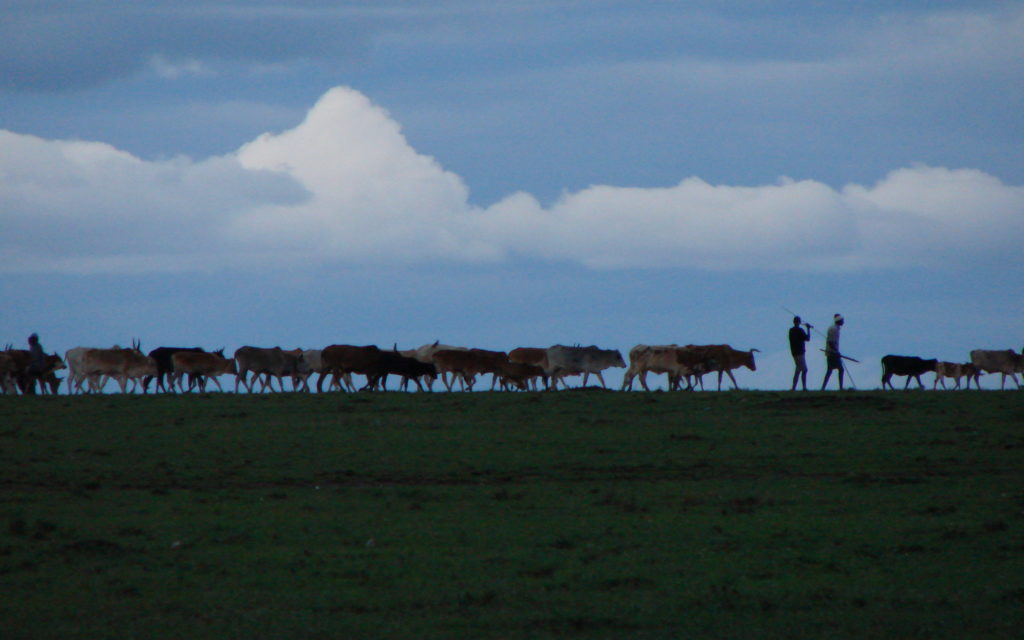Settlement in East Africa
The Maasai territory reached its largest size in the mid-19th century, and covered almost all of the Great Rift Valley and adjacent lands, from Mount Marsabit in the north to Dodoma in the south. At this time the Maasai, as well as the larger Nilotic group they were part of, raised cattle as far east as the Tanga coast in Tanganyika (now mainland Tanzania). Raiders used spears and shields, but were most feared for throwing clubs (orinka) which could be accurately thrown from up to 70 paces (well over 100 yards).
Starting with a 1904 treaty, and followed by another in 1911, Maasai lands in Kenya were reduced by 60 percent when the British evicted them to make room for settler ranches, subsequently confining the Maasai to present-day Samburu, Laikipia, Kajiado and Narok districts.
Maasai in Tanganyika (now mainland Tanzania) were displaced from the fertile lands between Mount Meru and Mount Kilimanjaro, and most of the fertile highlands near Ngorongoro in the 1940s. More land was taken to create wildlife reserves and national parks: Amboseli National Park, Nairobi National Park, Maasai Mara, Samburu National Reserve, Lake Nakuru National Park and Tsavo in Kenya; and Lake Manyara, Ngorongoro Conservation Area, Tarangire[22] and Serengeti National Park in Tanzania.
Maasai are pastoralist and have resisted the urging of the Tanzanian and Kenyan governments to adopt a more sedentary lifestyle. They have demanded grazing rights to many of the national parks in both countries.
Maasai land now has East Africa’s finest game areas. Maasai society never condoned trafficking of human beings, and outsiders looking for people to enslave avoided the Maasai.
The Maasai are a Nilotic ethnic group inhabiting northern, central and southern Kenya and northern Tanzania. They are among the best known local populations internationally due to their residence near the many game parks of the African Great Lakes, and their distinctive customs and dress. The Maasai speak the Maa language. Some have become educated in the official languages of Kenya and Tanzania, Swahili and English. The Maasai population has been reported as numbering 841,622 in Kenya in the 2009 census, compared to 377,089 in the 1989 census.
The Maasai people stood against slavery and lived alongside most wild animals with an aversion to eating game and birds.

